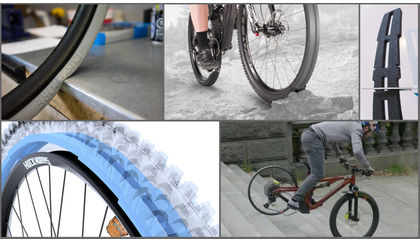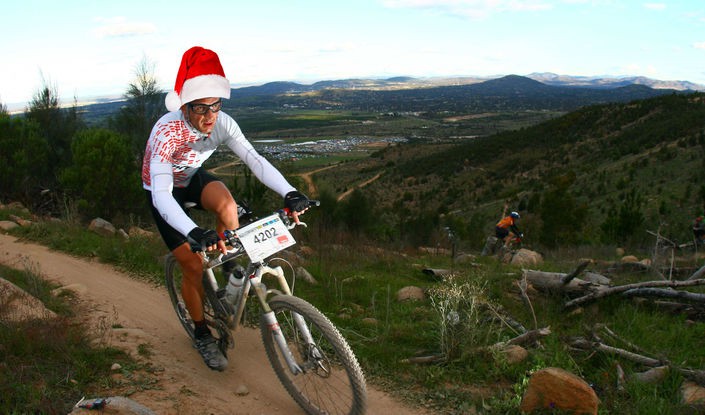I have a little mantra I use when racing long distance events. You would have heard it, and it goes like this: "eat, drink and be merry." Perhaps it's a little simplistic, yet it covers a few key areas for long distance racing and gets me through the long, hard hours.
Eat!
I will harp on and on about fuelling your body during long distance events. Considering you can burn in excess of 15,000 calories (about a week's worth of energy for an average healthy adult) in a 24 hour period, it is vitally important you keep putting energy in.
"Eat" doesn't necessarily mean eat solid food; it doesn't matter how you get the calories into your body as long as you keep them coming in. Sports drinks, sandwiches, lollies, Coke, pizza (a.k.a. food of the Gods), are all good. Basically, anything that keeps up the carbohydrates and simple sugars to keep you fueled.
Drink!
Aside from running into a tree, nothing will stop you faster than becoming dehydrated. The old cycling mantra applies: Drink before you get thirsty, eat before you're hungry – make it a habit. If the course is demanding and technical, think about where you can drink. Use your pre-race ride of the course as a tactical recon to find the best places to fuel up mid-lap.
Be Merry!
That shouldn't be taken as a suggestion, but a direct order! Enjoy yourself. Attitude is everything in an incredibly tough exercise like sitting on a bike for a whole day. Have fun. Talk to other competitors, high five marshals at check points, poke your tongue out at photographers. Mountain biking is fun, never forget that. When the hurt is really on, that slice of pizza does wonders, but in the end it is your attitude and manner towards others that defines your race.
“It does not matter how slowly you go as long as you do not stop.”
- Confucius
5 more 24 hour race tips
1. Crew

Get yourself a good crew. Fellow racers (particularly those with endurance racing experience) are often more understanding of what's needed of them throughout the event. Make sure you've got a good relationship with them. Nerves can fray through the wee hours of the morning - if you're prone to getting a bit cranky as the race goes on, perhaps warning your support crew not to give your mood swings any significance. (If they are your mates they probably already know!)
If you can convince your mate to give up their weekend to help you out do what you can to make the job as easy as possible for them. Label your bottles with mixing instructions, charge your batteries in advance, give them a pocket full of change for coffee, put your spare riding gear somewhere easily accessible like a clear boxes with a list written on the lid.
2. Live and learn
24 hour racing quite often is a race of attrition. The mind, body, and equipment all fatigue as the race wears on. Minimizing the impact these have on your lap times and ability to keep going can be key to putting in a good performance. It is hard to prepare for the really hard times without prior experience. If this is your first attempt, treat it as a learning experience and go easy on yourself. Remember, attitude is everything.
3. Pre-ride plan
As said above, a pre-ride of the course is not only to find where to feed safely but also a good chance to consider different line selections; while one line might be faster, if there's a slower but significantly easier way through a section of the course it might be worth sacrificing outright speed to save your body.
4. Stretch and shake
Stretching while you're riding can help alleviate the aches and pains that will crop up along the way. Arch your back like a cat to soothe the lower back, bend your fingers back for relieving your palms and forearms, drop your ankle whilst clipped in to get at your calf muscles. Mixing up climbing in and out of the saddle can also help keep the body moving a little better. Taking your hands off the bars and feet out of the pedals to shake them around helps with maintaining proper blood flow.
5. Lube your chassis
While your hands and feet hold up okay, there is still one more contact point... (now we're going to get a little personal). If you don't usually use chamois cream, start doing so at least occasionally to get used to it. The cream can be a lifesaver! Get some baby wipes - port-a-potties are generally stocked with what can only be described as sandpaper, so grab yourself some aloe vera infused goodness - you'll thank me for the tip later!
The only way to truly find what works best is going out and giving it a go, but these tips will help anyone trying to survive 24 hours in the saddle.

RELATED ARTICLE:
Looking for an Enduro weapon? These 5 bikes can descend (and climb) with the flick of a lever
Enduro bikes have to be ridden hard downhill, but you also need to ride between stages...these bikes can do it all... READ MORE

RELATED ARTICLE:
Foam tire inserts and the future of MTB wheels
More and more mountain bikers are considering foam tire inserts. We test and compare different types to find out if they deliver on tire, rim, and flat protection... READ MORE



